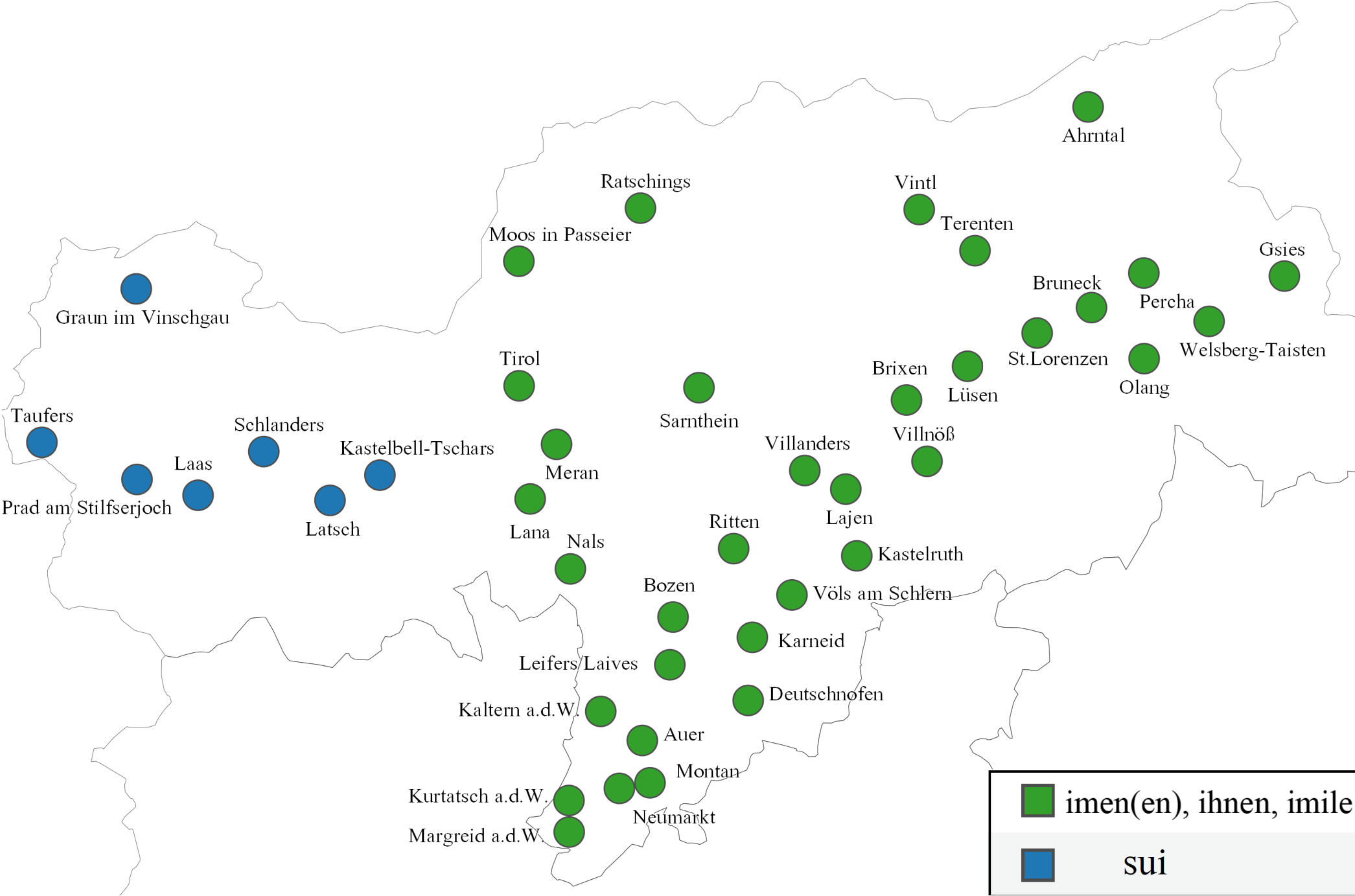In other parts of the pronoun system, there is often the loss of the accusative form (i.e., mich ‘me’, dich ‘you’), where speakers instead use the dative form (i.e., mir, dir) for the direct-object function, too. The process of cases combining in form is called syncretism, and it is a linguistic process that takes place in many German dialects and which has also taken place in Standard German in the past (e.g. compared to older language stages like Old High German).
AlpiLinK considers the Tyrolean dialects of the province of Bozen-Südtirol/Bolzano-Alto Adige, not the Tyrolean dialects in Austria. In South Tyrol the Tyrolean dialects are used in almost all functional domains except the most formal ones, for which standard German is used, which is also the language of schooling. However, in contrast to the diglossia situation in Switzerland, in South Tyrol standard German is sometimes spoken, not only written (cf. Ciccolone & Franceschini 2015, pp. 459-460). In the province of Bozen-Südtirol/Bolzano-Alto Adige, standard German has the status of an official language, equivalent to Italian, and is protected by the Autonomy Statute. The Tyrolean dialects have no official status. Nevertheless, 93% of the German-speaking South Tyroleans report that they can express themselves fluently in the dialect (ASTAT 2015, p. 137). These numbers clearly show that the Tyrolean dialects are by no means endangered, but rather thriving speech varieties, which are actively used across all generations and social groups.
References
Further reading
- Glück, Alexander, Mara Maya Victoria Leonardi & Claudia Maria Riehl (2019): Südtirol. In Beyer, Rahel & Albrecht Plewnia (eds.): Handbuch des Deutschen in West- und Mitteleuropa. Tübingen: Narr Francke Attempto, pp. 245-280.
- Rabanus, Stefan (2019): Tedesco. 3. Tedesco in Alto Adige. In Thomas Krefeld & Roland Bauer (eds.) (2019): Lo spazio comunicativo dell’Italia e delle varietà italiane, Versione 67. Korpus im Text.
- Rabanus, Stefan, Ermenegildo Bidese & Silvia Dal Negro (2019): Deutsch als Minderheitensprache in Italien. In Joachim Herrgen & Jürgen Erich Schmidt (eds.): Sprache und Raum. Ein internationales Handbuch der Sprachvariation. Vol. 4: Deutsch. Berlin/Boston: De Gruyter Mouton, pp. 1096-1114.
- Scheutz, Hannes (ed.) (2016): Insre Sproch. Deutsche Dialekte in Südtirol. Mit dem ersten ‘Sprechenden Sprachatlas’ auf CD-ROM. Bolzano-Bozen: Athesia.
- Tirolischer Sprachatlas = Klein, Karl Kurt & Ludwig Erich Schmitt (eds.) (1965–1971): Tirolischer Sprachatlas. Unter Berücksichtigung der Vorarbeiten Bruno Schweizers bearbeitet von Egon Kühebacher. 3 vols. Marburg: Elwert/Innsbruck: Tyrolia. A part of the maps is freely accessible online via REDE SprachGIS, see the overview here.
Other online resources


